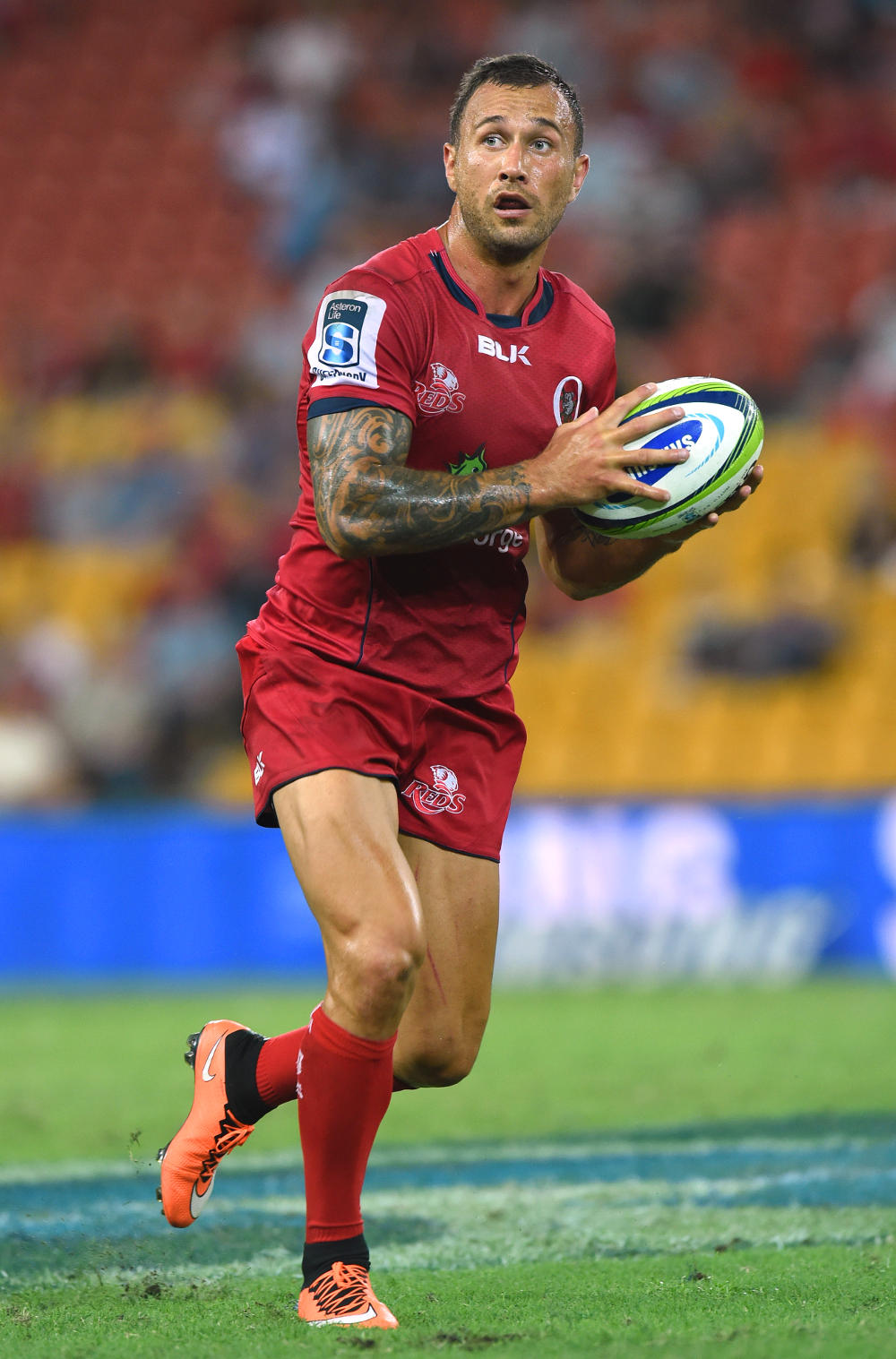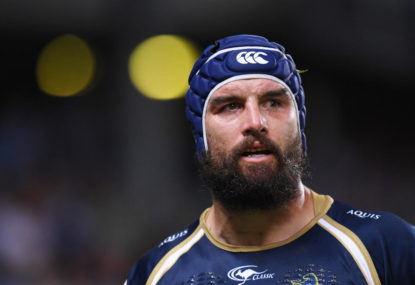With uncertainty running rife with the ARU’s incompetency and the flailing nature of our five Super franchises, there is little doubt that change is required.
Change, however, is a damning point of order – one that hardly breeds immediate results – and it must be treated with the utmost consideration.
By all accounts, the Force, Brumbies and Rebels are potential recipients of Super Rugby decapitation, but cutting a team from any competition is always a dicey business. We must ask ourselves a few questions.
Namely, “do we need to do this?” and “what is the course of action from there”.
In order to answer these questions, we have to take a hard look at the current state of our Super teams.
The Reds, Tahs and Brumbies – traditionally our strongest sides – find themselves in a transitional period in which key players and coaches will continue to come and go or at least another season. Nick Stiles may have recruited the biggest and brightest names to kickstart a Ballymore resurgence yet we must question the team’s direction after four consecutive losses, along with the longevity and match-day impact of Stephen Moore and George Smith, the two men touted as turning the Reds around.
Meanwhile, the Tahs continue to struggle against any real title contenders and lack fluidity under Daryl Gibson, having only posted scratchy victories over the Rebels and the Force, while the conference-leading Brumbies are only 2-3 after throwing away opportunities against the Sharks and Crusaders.
And those are our top three sides.
The Force have shown glimpses of fight, particularly against the Tahs and Reds, yet realistically lack the finishing power to see out fixtures and while I’ll try to resist the urge to sink the boot into the Rebels after their Friday night shellacking at the hands of the Highlanders, I can’t help but question the validity of an Australian side that finds themselves with a -162 points differential after only five showings.

It’s time to muster up some courage and face the facts. 2017 was heralded as a year of resurgence yet six wins from 24 outings places our undeservingly-titled ‘Super’ clubs squarely in the red. We’ve stretched our resources too thinly without building at the grassroots and now we are paying the price with a weak selection of Super franchises.
Quite simply, Australian rugby has been diluted beyond repair and we need to pour ourselves another glass – one with only four measures.
So, where do we make our cut?
While it wouldn’t be a stretch to say the Reds are easily the underperformers of the Australian conference, the history, fan-base, talent and wildly successful U20 development program mean the Reds are a key cornerstone of Australian rugby.
It’s a similar story for their blue-blooded neighbours at Moore Park. The Waratahs were Super Rugby Champions in 2014 and still pack the firepower to rattle the chain come finals time. Coupled with the largest player base in Australia and a host of Wallabies at their disposal, the Tahs aren’t going anywhere and Australian rugby needs the Tahs to fire more than ever.
Unfortunately, that is where the certainty ends and the mindless prattle of the past two weeks ensues. True, the varying degrees of unfounded animosity and critique aimed towards the Brumbies, Force and Rebels has been nothing short of barbaric, yet collective common sense and informed discourse dictates that one club must go for Australian rugby to reclaim its former glory.

Following Friday night’s massacre in Dunedin, the Rebels are deservedly copping a serve and would be the firing line if it were not for their private ownership. Based on current form, the Rebels are a sinkhole of Australian rugby and many think they are the ones who should go.
Or not. Perhaps no clubs have to go.
Perhaps if we have the courage to look past Bernie Larkham’s obvious prejudice towards shifting his side out of Canberra and take things one step further, we could entertain the possibility of a merger between Australia’s most successful Super Franchise – the Brumbies – and the club representing Australia’s fastest growing rugby state – the Rebels.
OK, OK. Quit screaming blue murder and hear me out.
The Brumbies have been an iconic Australian club since their inception in 1996 and have contributed to the development of many fine Wallaby players and staff. For a decade spanning ’96 to ‘05, the Brumbies were the crème de la crème of Australian rugby, pulling crowds in excess of 28,000 enroute to an unprecedented six finals series, five GF appearances and a brace of Super Rugby titles.
There is no doubt that the golden era of Australian rugby at the turn of the millennium was largely thanks to the creation and subsequent success of the ACT club.
Now, this is not to say that the Brumbies of today are unworthy of this legacy. The side has been a regular finals contender since their agonising GF loss to the Chiefs in 2013 and few will forget their historic 14-12 victory over the British and Irish Lions in the same year, but dwindling junior participation rates and miserly ticket sales are damning indications of a club in strife.
Canberrans may proclaim a love for the Brumbies and their recent successes but the crowd stats do not lie. Last week – following an impassioned call-to-arms from Brumbies HQ – only 11,195 people turned up to watch the Highlanders steal the win. The prior weeks’ takings were hardly reassuring – a crowd of 8,647 for one of the supposedly “drawcard” derby fixtures against the Force to follow a paltry 8,738 in their opening round loss to the Sharks.
When compared to the NRL Raiders’ 14,000-15,000+ attendees for their opening two home matches at the same venue, one does begin to worry for the Brumbies fan-base. For me, it’s not a question of whether the Brumbies are worthy of Canberra. In fact it’s quite the opposite.
Conversely, the Rebels – now sitting 0-5 after displaying a unique combination of no defence and even less game sense against the Highlanders – are ideally situated in Victoria, undoubtedly Australia’s premier sporting state. With ten AFL Clubs, two A-League sides, and wildly successful franchises in cricket, netball and basketball, it’s a sports-mad hub that will continually pull crowds regardless of code.
Though the Rebels have shown a distinct toothlessness at the elite level, rugby’s foothold in Victoria has come in leaps and bounds, particularly over the past two seasons. In 2016, overall Club participation increased by 11 per cent with 4,452 registered players plying their trade last year. More importantly, junior rugby numbers have skyrocketed to 2,215, a whopping 15 per cent increase from 2015.
At it’s not just player numbers that are on the rise. Last year’s Australia versus England fixture at AAMI Park drew a stadium record of 29,871, beating 2015’s A-League grand final between Melbourne Victory and Sydney FC and the 2010 rugby league Test between Australia and New Zealand. Clearly, Melbourne is a viable rugby centre.
So, if one was to consider combining the iconic 20-year legacy and talent of the Brumbies with the swelling junior participation and sports-crazed aura of Melbourne, could we possibly be onto something?
I think I might have your curiosity, if not your attention.
Naturally, there are a multitude of questions that need answering, like “how could a merged team possibly succeed?” “what would they be called?” and “what would happen to rugby union in Canberra?”, just to name a few. Most pundits would throw in the towel before even considering the logistics of a merger. However, it’s not as implausible as you’d think.
Back in 2005, two New Zealand provincial sides Nelson’s Bay rugby union and Marlborough rugby union made the decision to merge and form a new club to compete in what is now the Mitre 10 Cup. Both sides had rich playing heritage, particularly the Marlborough side who once famously defended the storied Ranfurly Shield for six consecutive games in 1973. Nevertheless, the unions saw fit to amalgamate in order to strengthen rugby in the region and compete at the highest level.
Nowadays, they are known as the Tasman Makos, winners of the 2013 ITM Cup and stomping ground for the likes of emerging All Blacks Kane Hames and Liam Squire.
Clearly, mergers aren’t impossible, nor are they doomed to failure.
Here’s my humble proposal. Bring the successful and globally-renown ACT Brumbies brand to Melbourne under the banner of the Southern Brumbies. This team is based out of AAMI Park and plays the majority of its home games there with a provision for hosting one home game back at GIO Stadium in Canberra. The team would play under the original Brumbies logo with a predominately navy colour scheme to accommodate for previous of both sides while drawing a swathe of new and reborn supporters through the Brumbies brand and Melbourne’s marvellous trend of backing successful teams.
With a combined host of previous ACT and Rebels players, the wider training squad will be far stronger with fringe players improving their skilset and getting game-time in the Dewar Shield (VIC) or the John I Dent Cup (ACT) while building towards a starting position in the Southern Brumbies’ NRC feeders – the Canberra Vikings and the Melbourne Rising. In so doing, this would place greater emphasis and interest in the NRC with a host of rookie Brumbies squaring off for their respective Canberra and Melbourne sides.

Why keep the Brumbies’ name and not the Rebels? It’s a historic name with a proud history. With the Brumbies name comes two Super Rugby titles and the legacy of Gregan, Larkham, Finnegan, Smith, Walker and other legends of the game, plus the ability to strike fear in the hearts of overseas opposition in a manner the hapless Rebels simply cannot.
Furthermore, the stripping of the Brumbies brand would only serve to alienate Canberra rugby supporters.
So, should my whimsical fantasies come to life, we could possibly even see a powerful quartet of Australian sides, each with a series of NRC feeders and domestic competitions to nourish and develop new players, but that’s an article for another time.
Imagine a side with the tight-five credentials of Scott Sio, James Hanson, Alan Alaalatoa, Rory Arnold and Lopeti Timani.
Imagine a Test quality backrow of Scott Fardy, Jordy Reid and Sean McMahon going toe-to-toe with Hooper’s Tahs or Read’s Crusaders.
Imagine Reece Hodge linking masterfully with Tevita Kuridrani to put Sefa Naivalu or Henry Speight through a gap.
These are the possibilities on offer for players, coaches and fans alike should the ARU decide to pull their heads out of the sand, put on their fading negotiators hats and do something for the betterment of Australian rugby.
































































































